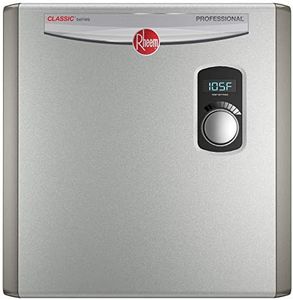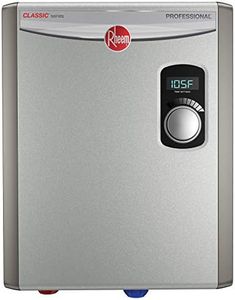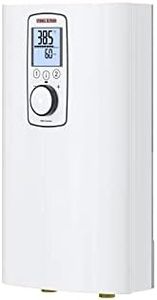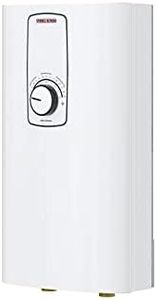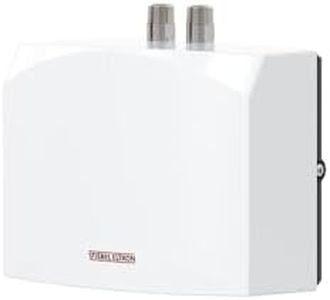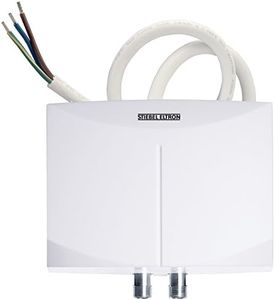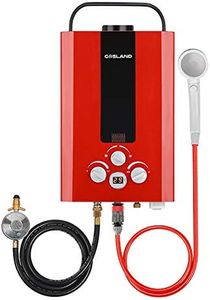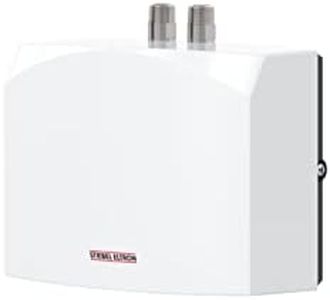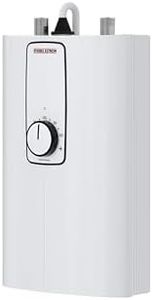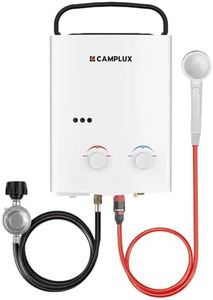We Use CookiesWe use cookies to enhance the security, performance,
functionality and for analytical and promotional activities. By continuing to browse this site you
are agreeing to our privacy policy
10 Best Tankless Water Heaters
From leading brands and best sellers available on the web.Buying Guide for the Best Tankless Water Heaters
Choosing a tankless water heater can greatly improve your home’s hot water efficiency and save space, but picking the right one means understanding your needs and how these devices work. Tankless water heaters heat water only when you need it, so you’re not wasting energy keeping a large tank hot all day. Before you buy, think about things like how many people live in your home, how many showers or appliances might run at the same time, the climate where you live, and whether you want to power your heater with gas or electricity. Identifying your household's hot water habits is the first step to making a choice you’ll be happy with for years.Flow Rate (Gallons Per Minute - GPM)Flow rate means how much hot water the heater can deliver at once, and it’s measured in gallons per minute (GPM). This matters because if your heater's flow rate is too low, you may not have enough hot water for running showers or appliances at the same time. Lower flow rates (2-4 GPM) work for single users or small apartments where hot water isn’t needed in multiple places at once. Medium flow rates (5-7 GPM) serve medium-sized households well, while high flow rates (8+ GPM) can handle larger homes and more simultaneous use. Count up the hot water demands in your home (like a shower and dishwasher running together) to estimate your needed flow rate.
Energy Efficiency (Energy Factor or Uniform Energy Factor)Energy efficiency, usually shown by an Energy Factor (EF) or Uniform Energy Factor (UEF), tells you how well the heater converts fuel or electricity into hot water with minimal waste. Higher numbers mean better efficiency and lower operating costs. Tankless water heaters are already more efficient than traditional tanks, but models with very high efficiency ratings are best for those wanting to save the most on energy bills and reduce their environmental footprint. If you care most about saving energy, prioritize models with higher EF or UEF scores.
Fuel Type (Gas vs. Electric)Tankless water heaters can be powered by natural gas, propane, or electricity. Gas heaters tend to have higher flow rates, making them better if you have many people using hot water at once, while electric models are easier to install and maintain but may be best for smaller needs or homes without gas supply. If your home already has gas hookups, a gas model can be efficient, but for smaller apartments or energy-conscious users, electric heaters might be suitable.
Temperature RiseTemperature rise means how much the heater can increase incoming water temperature to your desired level in a single pass. This is important because incoming water is colder in winter or in colder climates, so your heater needs more power to achieve the same hot water temperature. In warmer climates, you can usually get by with less powerful units. Always check the difference between your incoming water temperature and your target hot water temperature to find a model that can handle the load during the coldest part of the year.
Size and Installation RequirementsTankless water heaters are much smaller than tank models, but they still come in different sizes and may have specific installation needs, such as ventilation for gas models or electrical upgrades for high-powered electric units. Consider where you want to install the unit, whether it’s close to points of use (which can minimize wait time for hot water) and if you’re able to meet the installation requirements for your chosen fuel type. Think about the space available and whether your home’s existing systems support your choice.
Maintenance NeedsAll tankless heaters need some maintenance, like descaling or flushing, to keep working efficiently. This can vary depending on water hardness in your area and the specific model. Simpler designs or those with easy-access service points are less hassle. If you want to minimize maintenance, look for models with self-cleaning features or ones that are rated for your area’s water quality.
